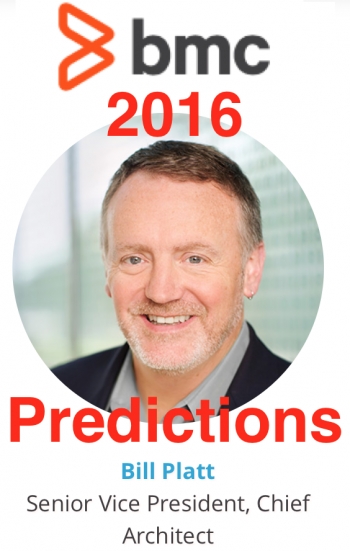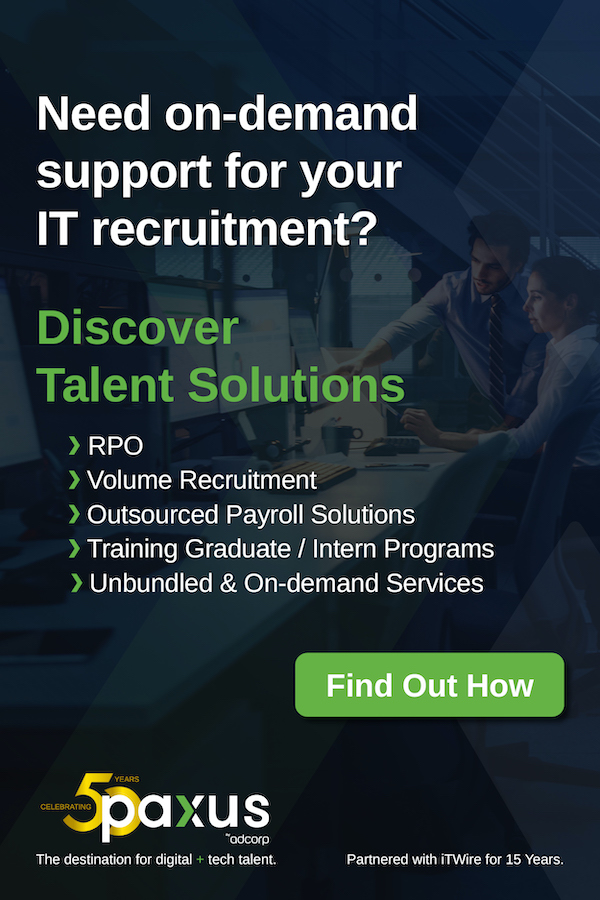Bill Platt is senior vice president and chief architect for BMC Software, and is responsible for ‘innovating and developing technologies that evolve with the ever-changing digital enterprise.’
Prior to joining BMC, Platt was general manager for Amazon Web Services with an impressive 25-year career in IT, including working in the software and cloud industries, the PaaS industry, desktop virtualisation, distributed computing, internet and ecommerce, enterprise software, services and support.
It is with this IT pedigree and in his current role as ‘Chief Architect’ that Platt makes his predictions for 2016, which we’ve listed below!
1. THE DIGITAL ENTERPRISE TAKES CENTRE STAGE:
In 2015, Gartner stated that digital business currently accounts for 18% of overall revenue, and predicts a jump to 43% by 2020. That seems modest given digital natives like Uber, AirBNB and Etsy continue to disrupt the market.
Still, only 5% of respondents in BMC’s 2015 survey had fully implemented the necessary digital services and mobile technologies to drive new revenue, open up new markets and deliver new operational efficiencies.
In 2016, we see this number growing significantly across FORTUNE 500 and traditional businesses, as they accelerate the adoption of digital practices to enter new markets, streamline operations in their current lines of business and strengthen the competitive advantages they have built for years.
2. THE WORKPLACE IS NO LONGER A PLACE:
Across every market, employees want the companies they work for to catch up with the smart, user-friendly technology they use at home. It’s a pivotal time for companies that want to remain competitive and attract top talent to go digital or go extinct.
In 2016 the ‘workplace’ will no longer be a place. Enterprises will accelerate the shift to a more consumer-like computing environment based on crowd-sourcing technology and persona-based approaches that enable employees to choose the productivity tools and technology they want to use – be it inside or outside the office.
This will set a new IT standard in delivering personalised services to employees and allowing them to be the curator of their own work experiences.
3. THE SECOND IS THE NEW MINUTE: TIME TO AUTOMATE
While traditional modes of IT must continue to drive down technology costs, the new mode of IT focuses on time-to-market, rapid application evolution (DevOps) as well as tight alignment with line of business inside of organisations. This is driving the need to automate.
We’ve already seen traditional businesses such as banking, insurance and transportation turn to DevOps in order to continuously introduce innovative, secure and easy-to-use solutions that strengthen their competitive edge.
At the same time online businesses are looking for solutions to protect new digital services from expensive outages that could potentially cause billions of dollars in lost revenue and damaged brands.
In 2016, ‘the second becomes the new minute.’
Speed to reaction is more critical than ever, from the developer all the way up to the CEO. Organisations that prepare for incidents ahead of time and have a development solution in place for fast, automated deployments will be best positioned to manage these problems head on when these unfortunate incidents occur.
More below, please read on!
|
|
4. THE PUBLIC CLOUD BRINGS ‘RAIN’ FOR BUSINESSES
Going into 2015, many predicted that the adoption of public cloud in the enterprise would slow due to concerns about data security. Instead, public cloud solutions have become more secure, reliable and easier for distributed workforces to use.
At the same time, private cloud became cheaper and easier for IT to manage, but those advantages have not proven to be enough to replace the convenience of public cloud now that security concerns have been alleviated.
Our prediction for 2016 is greater adoption of public cloud solutions in the enterprise, as well as hybrid cloud strategies that leverage the best assets of both private and public clouds to drive new revenue streams and open up new markets.
5. YOU WILL BE HACKED: ARE YOU READY TO DEFEND YOUR DATA?
This year we saw security become a board-level discussion, as many high profile brands fell victim to vulnerabilities, cyber attacks and data breaches. It is taking far too long to address vulnerabilities, essentially giving hackers an open door to access anything they consider valuable.
80% of vulnerabilities are known yet it takes an average of 193 days to patch these vulnerabilities – meaning that companies are exposing themselves to a potential breach for more than six months at a time.
In 2016, it’s not a matter of if your enterprise is going to get hacked, it’s a matter of how and when.
BMC expects more organisations to seek out internationally recognised data protection accreditations, like Binding Corporate Rules (BCRs), which allow secure data transfer across borders while continuing to comply with local rules and regulations.
-
iTWire recently covered Chris Gibbs being appointed the MD of BMC Software Australia and New Zealand as well as recently covering part of BMC’s Australian Exchange user conference in two articles entitled ‘VIDEOS: BMC advancing digital transformation, talking enterprise management’ and ‘VIDEO - BMC’s annual mainframe report: plenty of life in mainframes yet!’.










































